Taxila
(A Scent of the Past)
The city of Taxila is located at the head of Doaba (a place between two rivers) in between the river Indus and the river Jhelum. It was famous as Taxshasila and Takhasila in the Sanskrit language in the past.
However, it was called Taxila in Rome and Greece. The Britishers used to call it Taxila at the time of the Invasion by Alexander the Great on the Subcontinent.
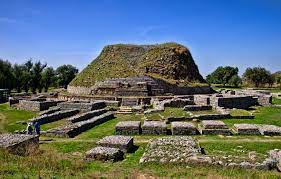
Today this modern city is renowned for archaeological sites, gravel stones, marble, stone utensils, decoration items, and heavy mechanical complex. There are more than 50 archaeological sites around 30km on the outskirts of Taxila.
Key information about Taxila
| Name | Taxila |
|---|---|
| Location | Rawalpindi District, Punjab, Pakistan |
| Historical Significance | An ancient city with a history dating back to 6th century BCE, a center of Buddhism, and a hub for learning and culture |
| Archaeological Importance | UNESCO World Heritage Site, a significant center of ancient Buddhist civilization |
| Famous Sites | Taxila Museum, Sirkap, Julian Monastery, Jaulian, Mohra Muradu |
| Geography | Located in the picturesque Taxila Valley, surrounded by Margalla Hills |
| Notable Periods | Achaemenid, Mauryan, Indo-Greek, and Gandhara Buddhist periods |
| Educational Institutions | Ancient Taxila was a renowned center of learning and attracted students from across the world |
| Alexander’s Visit | A historical link to Alexander the Great’s visit and interactions with local scholars |
| Monasteries & Stupas | Abundance of monastic complexes, stupas, and relics showcasing Buddhist influence |
| Gandhara Art | Known for its distinctive Gandhara art, a fusion of Hellenistic and Indian styles |
| Ancient Trade Hub | Played a crucial role in trade along the Silk Road |
| Present-day Significance | A place of historical and cultural importance, attracting scholars, historians, and tourists |
| Accessibility | Easily reachable from Rawalpindi and Islamabad |
| Preservation Efforts | Continuous restoration and conservation work to safeguard the heritage |
| Languages | Urdu, Punjabi, and English widely spoken |
| Nearby Attractions | Islamabad, Rawalpindi, Margalla Hills National Park |
| Local Markets | Offer Gandhara art replicas and other handicrafts |
| Accommodations | A range of hotels and guesthouses for tourists |
| Climate | Mild, with warm summers and cool winters |
| Unique Features | The Taxila Museum houses an extensive collection of artifacts from the region’s history |
| Local Cuisine | Traditional Pakistani and Punjabi cuisine |
A brief History of Taxila
When Alexander the Great reached the Indus after continuous conquests, King Taxilas came across the river to meet him.
They formally greeted each other. King Taxilas said, “if you are not here to take away water and other necessities of life then what shall we fight for?”. It is because these are the few reasons for which people fight. “Yet the items like gold and silver are concerned, if I am richer than you then I will give a part of my jewels and money.
And If I am poorer than you, I am not interested in your wealth”. Alexander replied; “What do you think that you will escape by showing this act of politeness? If you think so you are at fault. I will fight the war of givenness and benefit till my last breath.
I will never let you go beyond me”. They exchanged valuable gifts and let the Taxilas live happily with his state. King constructed a bridge of boats for Alexander at the point of Aohind hund
The Archaeological Sites and Famous Places in Taxila
The museum
Its foundation was led by general lord Chelmsford in 1918. It is located in the center of an orchard. On 15th April 1928, Habib Ullah member of the Education department inaugurated the museum.
The design for the building was devised by the principal of Meo School of Art Lahore S.M Silwan. This museum with a central hall and two galleries has more than 7000 rare artifacts discovered from Taxila.
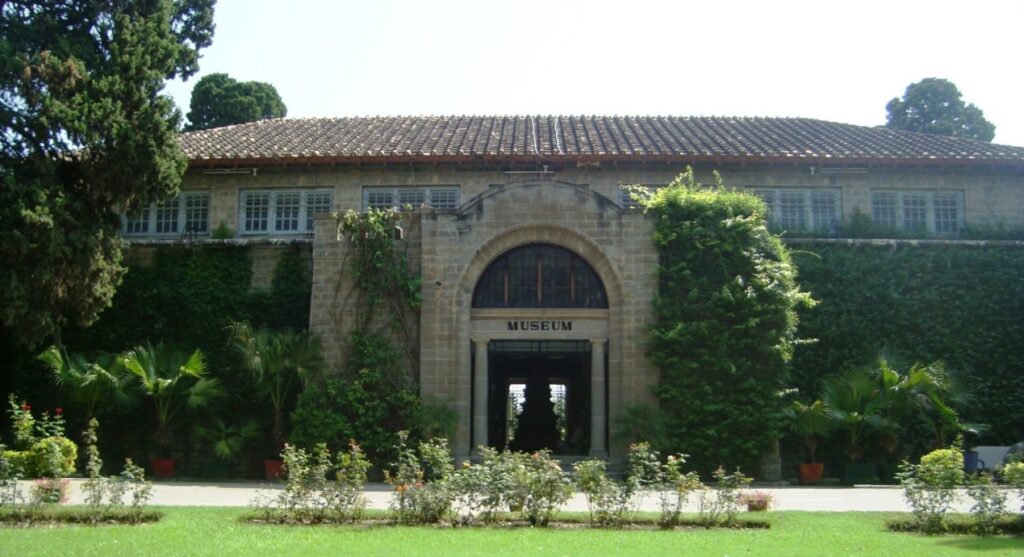
It has stone, lime, and mud sculptures, ancient coins, Sanskrit and Brahman, the Kharosthi alphabet, mud and metal utensils, and jewelry of gold and silver.
It has significant importance on the international level since it is the largest center of Gandara civilization. It is closed on the first Monday of every month.
Sir John Marshall
He was appointed the director of archaeology in 1902 in the British regime. He did the survey and excavations at Char Sadda, Raj Garh, Sir Nath, Sravasti, and Mohen Jodaro in his interest.
He excavated the ancient traces of Taxila from 1913 to 1934. He also established the Taxila museum. As we enter the museum, the personal chair, table, portrait, and belongings are arranged systematically on the right side of the museum.
In 1913, the excavations in Taxila began under the supervision of Sir John Marshall. It is one of the oldest cities, Stupa, and Temples
Bhir mound (200 to 600 B.C.)
The museum of Taxila is located adjacent to this ancient city. In the 6th century B.C. Achaemenid King Darius, I conquered Gandara. And led the foundation of the capital of the state.
Here he introduced engraved coins, Bars, stamps, Aramaic writing, and Kharosthi alphabets. In 326 B.C., King Ambahi after being defeated by Alexander invited the great Alexander to this place.
Here Alexander met kotelia and Chander Gapat Moria. Prince Ashok and Kunal also ruled there. Raja Ashok introduced Buddhism here for the very first time. After his death, Greece destroyed Taxila and Gandara.
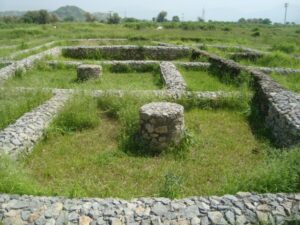
Sirkap ( 200 B.C to 200 A.D)
In the second century B.C., when Bactrian Greek King Demetrius invaded Taxila, he established a new state of Bactrian Greek. He settled in a new city Sirkap too.
A boundary wall and four doors were built to save the city. This second town of Taxila is called Diomalai folktale Raja Risalo and the Sirkap from the seven demons.
In the 40th A.D., a disciple of Jesus Scent Thomas reached Sirkap Taxila. The king welcomed him into the court. Famous tourist Apollonius visited Taxila in 44 A.D. and said that it is like Nineveh city and fenced like Greece.
The narrow streets are like Athens. There are traces of the Greek, Saka, and Pahlavi epochs.
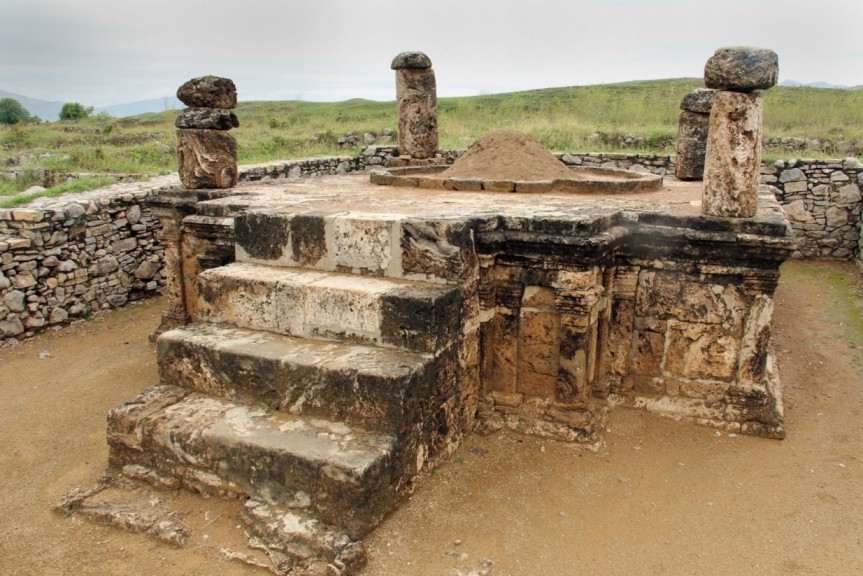
In the second century A.D., Kashan rulers destroyed Pahlavi’s reign and led the foundation of a large empire which was stretching to the river Ganga.
This ancient city is 2 km from Taxila Museum. Its reliquaries are still unique because of chess-style bazaars and straight roads.
Jandial temple (100 B.C.)
Greek-style beautiful pieces have been discovered from this temple located at a distance of 300 meters from the north door of Sirkap city. This temple is dedicated to The Zoroastrian nation.
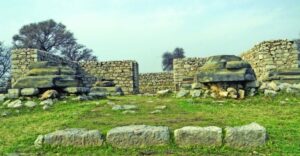
Sir Sikh (200 B.C. to 500 B.C.)
Kashan rulers settled the third city of Taxila in 80 A.D. at a distance of 2km from Taxila’s second city Sirkap.
It is narrated that the name of sir Sikh’s brother was Sirkap. He was the person who ruled this area. The 18 feet wide wall of this city reflects its brilliant past.
Dharmarajika Stupa (200 B.C. to 500 B.C)
It is the oldest and largest monastery of Buddhism in Dharmarajika Taxila. It is located at the edge of the Dharam stream.
This monastery was built by monarch Ashok of the Maurya family on the sacred ashes of Mahatma Buddha.
Maharaja Ashok was called Dharmarajika because he served Buddhism. That’s why this monastery was given the name “Dharmarajika”. Its central stupa has a diameter of 131 feet. And the dome has a height of 45 feet.
The stupa was damaged in the earthquake of 40 A.D. during the Kashan regime, it was reconstructed and renovated two times. And different sights of his life were shaped on the stones.
These stones were fixed near Stupa. At the end of the fifth century, Kashan lost his state to Safeed Hun. This place is 3km from Taxila’s museum in the North near Shah Pur village.
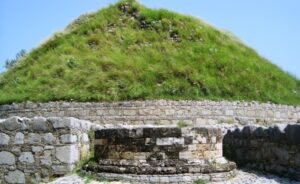
Kunal’s Stupa
This stupa is located in the southwest of Sirkap city on a hilltop. It is dedicated to the son of King Ashok. It is said that his stepmother had destroyed his eyes while taking revenge.
Jaulian Monastery
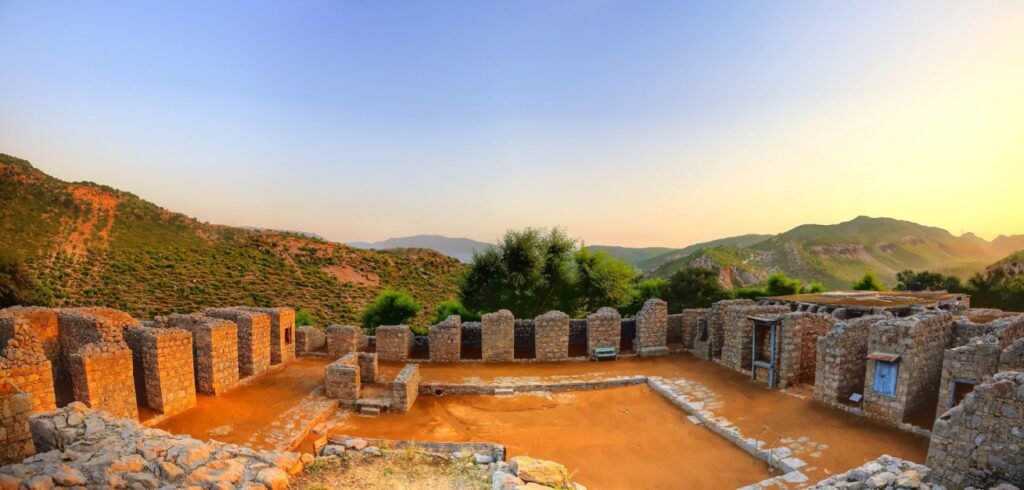
From Taxila Museum, on Haripur Road, a small road to the northeast from Nakra Bangla stop leads to Jaulian Stupa.
The archaeological remains of Jaulian belonged to the Kashan era. It consists of a Buddhism stupa constructed at a height of 300 feet and a Monastery.
Large stones are shaped and transformed into different sculptures. They depict the life events of Mahatma Buddha.
Such a huge amount of sculpture is rarely seen anywhere. Therefore, national and international researchers consider it mandatory to visit this place.
Mohra Muradu (200 B.C. to 500 B.C.)
This monastery of Buddhism belonged to the second century and is built away from the city. It is built on hatiyal hill for meditation. In the fourth and fifth centuries, it was furnished and renovated on a large scale.
Its stupa is fixed at 14 feet high podium. However, a Gandara-style style monastery consists of 27 rooms. The novel discovery of this place is 20 feet high around Manti Stupa.
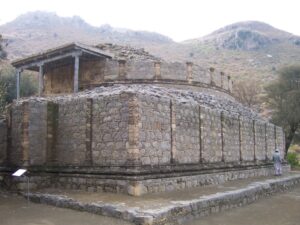
It was established as a memorial to a respectable and honorable teacher. The stupa in the central hall of Taxila Museum is a replica of the stupa in the Room of Mohra Murad temple.
This Buddhism worship place is in the west of Monastery Jaulian and on the east side of Taxila Museum About 6km away.
Piplan
It is called piplan due to the thick shady trees of peepal. They used to provide shade during sunlight and rain to everyone before excavations.
Different archaeological remains have been discovered during excavations and they are placed one over the other.
This monastery of ancient times was built at the beginning of the Kashan regime. But it was ruined in the fourth and fifth centuries.
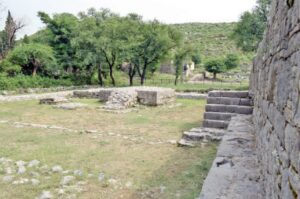
These traces were leveled and a new monastery was built. Its architectural style reflects Mohra Murado and Jaulian. This monastery is 6km away from Taxila Museum.
Jinnan wali Dheri (400 A.D. to 500 A.D.)
This monastery of Buddhism and Stupa traces are located about 10km to the northeast of the museum and 3km to the west of Jaulian village in Bhera village. It is a fine piece of architecture.
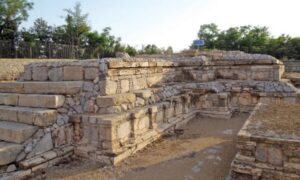
Khola Inn
The stone discovered from Khola Inn gives a clue that Taxila was settled in 3000 B.C. These traces are assumed to be the first building of Taxila. The remains of Khola Inn have located 3km the southwest from bharr mound.
Hatiyal
These traces were discovered in 1980 and proved that this is the place where Mahabharat -the sacred book of Hindus, was first recited in a court.
Giri Fort
This fort is located beneath the margala hills about 8km away from Taxila on the northeast side. There are signs of two monasteries and Stupa.
One of them is below the hill and the other one is at the hilltop. Giri fort is at the hilltop and was built by Buddhist worshippers in the fifth century.
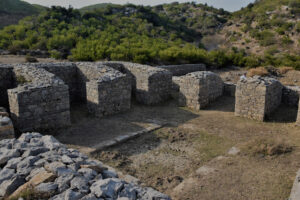
After that, Sultan Masood, the son of Sultan Mehmood Ghaznavid stayed here too. Khurram Gujjar and Khurram Paracha villages are the ways to this fort.
Bhalmala
It holds a significant status because of its Christianity cross sign architecture style. A plate was discovered there to depict the death scene of Mahatma Buddha.
A monastery like other monasteries is located on the East side of Stupa. The first stop for every trade flock traveling from Taxila to Resham highway in the northeast is Bhalmala Which is 22km away from Taxila Museum.
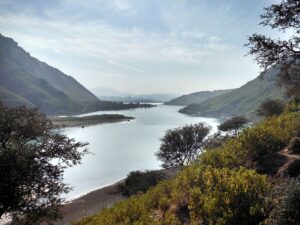
The role of King Ashok and Chandragupta Maurya is very important therefore it is important to write about their life history.
King Ashoka
He is called the greatest king in the history of the subcontinent. He is also called Ashoka the Great. A sculpture of three lions on the pillar top of Sang Khara is the national sign of modern India.
Raja Ashoka ordered to build this and it was discovered by Sarnath. Ashoka was born in Bundu SAR. He was fond of luxury at a young age. He eradicated the rebellious activities in Taxila in his father’s government.
In 272 B.C., after the death of his father, he became the king. His rule was all over Pakistan, in the southwest area of Balochistan and the Northern areas of the province KPK. At that time, Pakistan had two names, Ithrapath and Adichie.
While the Taxila was the capital. Patali Puttar was also its capital. In the war of 261 B.C., he was conquered but about one lac people were killed. 1.5 lac were arrested and millions of people were sick and starved.
After seeing the terrifying results of the war, he stopped his war policy and adopted the peaceful religion of Buddhism. He sent the Buddha scholars not only to Subcontinent, Sri Lanka, and Burma but also to Tibet, China, Japan, Egypt, Sham, and Maqdunia.
He declared Buddhism the royal religion. He engraved the orders, announcements, and instructions of the government near the public speaking places on a hill or a stone. 36 orders of such kind have been discovered to date.
These all orders are written by the engravers of Taxila. He was the first ruler of the Subcontinent who built Stone buildings. Kashmir valley’s city, Srinagar was settled by Ashoka.
Pakistan was very prosperous during his tenure. A luxury lifestyle was common. Most of the people were well-literate.
He died in 232 B.C. and ruled this area for 40 years. Nobody knows how he died. But according to a Tibet narrative, he died in Taxila.
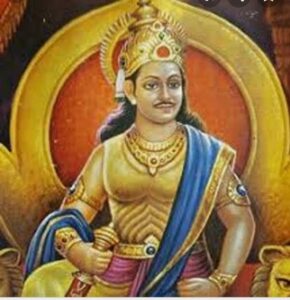
Chandragupta Maurya
He was the son of a Gypsy Tribal chief. While his mother belonged to a low caste. He gained military pieces training.
He had a conflict with Magda’s king Nand Raja due to some reason and the king ordered him to leave the country.
When he came to Punjab, he met Alexander the Great. He urged him to attack Magda. But his wish never came true because Alexander left this place.
After the death of Alexander The Great, there arose a rebellion against the Greeks in Punjab. Chandragupta Maurya gathered the army and defeated the Greeks with his assistant Chankia.
He captivated most of the area in Punjab. Later on, he invaded Magda and killed Raja Maha Padm Dhan Nand. He became the king and led the foundation of the Maurya family after his mother’s name.
Slowly and gradually, he conquered a different state and set a vast state. He made patli Puttar his reign’s capital. His state prevailed from Bengal to Koh Hindukush. And from Himalayan to Narbada.
His army had 6 lac people, 30 thousand armed men, 9 thousand warrior’s elephants, and 8 Ruth’s. In 297 B.C., he gave his government to his son Bundu SAR and went to the forest with Mahatma Badar Baho. He died of starvation.
Khan Pur Lake and Dam
This dam is built on the river Haro. Its purpose is the supply of water to Hazara, Rawalpindi, and Islamabad for drinking, irrigation, and industrial needs.
It is 167 feet high and stretches at a length of 1550 feet. It has a capacity of storing 2.5 lac acres of water.
This lake is 48 km away from Islamabad and located near Khanpur town of province KPK. That’s why it is called Khanpur lake.
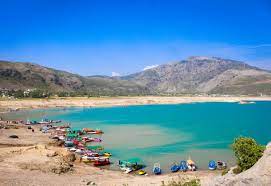
Every year, the KPK tourism development corporation held sailing and other sports competitions. Moreover, fishing and sailing facilities are there for tourists and the students who came with informative tours.
Families of Rawalpindi, Islamabad, Abbottabad, Haripur, and Taxila come here for a picnic on weekends. You can reach there from Taxila via an Auto and a Suzuki van.
Schools in Taxila:
- City Public School Taxila: A reputable school offering primary and secondary education with a focus on academic excellence.
- Fauji Foundation Model School: A school run by the Fauji Foundation, providing quality education to students in the region.
Colleges in Taxila:
- Government Degree College for Women: This college offers undergraduate programs for female students in various disciplines.
- Government Degree College for Men: Provides undergraduate education for male students in a range of fields.
Universities in Taxila:
- University of Engineering and Technology (UET) Taxila: Known for its engineering and technology programs, this university is a prominent institution in the region.
Hospitals in Taxila:
- THQ Hospital Taxila: A government-run hospital that provides medical services to the local community, including emergency care and outpatient services.
- Taxila Institute of Medical Sciences (TIMS): A private hospital and medical institute offering a wide range of healthcare services.
Restaurants in Taxila:
- Food Street Taxila: A popular spot for local and traditional Pakistani cuisine. It offers a variety of dishes and is a favorite dining destination.
- New Savour Foods: A restaurant known for its delicious fast food and traditional Pakistani dishes.
- Zaika Restaurant: Offers a diverse menu with a mix of Pakistani, Chinese, and fast-food options.
- Fast Food Junction: A small eatery serving quick and tasty fast-food items like burgers, sandwiches, and fried chicken.
FAQs
1. What is the historical significance of Taxila?
Taxila is an ancient city with a history dating back to the 6th century BCE. It was a center of Buddhism and a hub for learning and culture. It played a crucial role in ancient Buddhist civilization and was a significant trade hub along the Silk Road.
2. Where is Taxila located?
Taxila is located in the Rawalpindi District of Punjab, Pakistan. It is situated in the picturesque Taxila Valley, surrounded by the Margalla Hills.
3. What are some famous sites and landmarks in Taxila?
Taxila boasts numerous archaeological sites, including the Taxila Museum, Sirkap, Julian Monastery, Jaulian, and Mohra Muradu. Each of these sites holds historical and cultural significance.
4. How can I reach Taxila, and what are the nearby attractions?
Taxila is easily accessible from Rawalpindi and Islamabad. Nearby attractions include Islamabad, Rawalpindi, and Margalla Hills National Park.
5. Can you tell me about the historical significance of Taxila during Alexander the Great’s visit?
Taxila has a historical link to Alexander the Great’s visit, where he met local scholars and exchanged valuable gifts with King Taxilas. Taxila’s significance during this time is reflected in its archaeological remains.
6. What is the architectural significance of the Taxila Museum?
The Taxila Museum, founded in 1918, houses more than 7,000 rare artifacts discovered from Taxila. It contains stone, lime, and mud sculptures, ancient coins, scripts in Sanskrit and Brahman, and various utensils and jewelry made of gold and silver. The museum is a central repository of the Gandhara civilization’s art and history.
7. Can you provide information on some of the important archaeological sites in Taxila?
- Taxila features several significant archaeological sites, including:
- Bhir mound (200 to 600 B.C.)
- Sirkap (200 B.C. to 200 A.D.)
- Jandial temple (100 B.C.)
- Sir Sikh (200 B.C. to 500 B.C.)
- Dharmarajika Stupa (200 B.C. to 500 B.C)
- Kunal’s Stupa
- Jaulian Monastery
- Mohra Muradu (200 B.C. to 500 B.C.)
8. Who were King Ashoka and Chandragupta Maurya, and what were their roles in Taxila’s history?
King Ashoka, also known as Ashoka the Great, was a renowned ruler who embraced Buddhism and promoted it throughout the region. He played a significant role in the history of Taxila and established many stone buildings and engravings.
Chandragupta Maurya was a leader who rose to power by defeating various rulers in the region. He founded the Maurya dynasty and extended his rule over a vast area, including Taxila. He made Patali Puttar (modern-day Srinagar) the capital.
9. What is Khanpur Lake and Dam, and where is it located?
Khanpur Lake and Dam are situated on the Haro River and serve the purpose of supplying water to Hazara, Rawalpindi, and Islamabad for various needs, including drinking, irrigation, and industry. The lake is located near Khanpur town in the Khyber Pakhtunkhwa province, approximately 48 kilometers from Islamabad.
10. What recreational activities are available at Khanpur Lake and Dam?
Khanpur Lake and Dam offer recreational activities such as sailing and other water sports competitions. Tourists can also enjoy fishing and sailing. It’s a popular destination for picnics among families from Rawalpindi, Islamabad, Abbottabad, Haripur, and Taxila.
11. How can I reach Khanpur Lake and Dam from Taxila?
You can reach Khanpur Lake and Dam from Taxila by taking an auto or a Suzuki van. The journey is approximately 48 kilometers and provides a beautiful scenic route.
12. Are there any nearby sites that are worth visiting around Taxila?
Nearby sites that are worth visiting around Taxila include the Khola Inn, Hatiyal, Giri Fort, and Bhalmala, each with its unique historical and architectural significance.
13. What languages are commonly spoken in Taxila?
In Taxila, you will commonly hear Urdu, Punjabi, and English spoken by the local population.
14. What types of accommodations are available for tourists in Taxila?
Taxila offers a range of hotels and guesthouses to accommodate tourists. You can find various options to suit your preferences and budget.
15. What is the climate like in Taxila?
Taxila experiences a mild climate with warm summers and cool winters, making it a suitable destination for year-round visits.
Wind Up Lines
Taxila has a deep history. Its ancient and archaeological sites are famous among history writers. Dharmarajika Stupa, Bhamala, and Buddha monasteries are worth watching spots.



